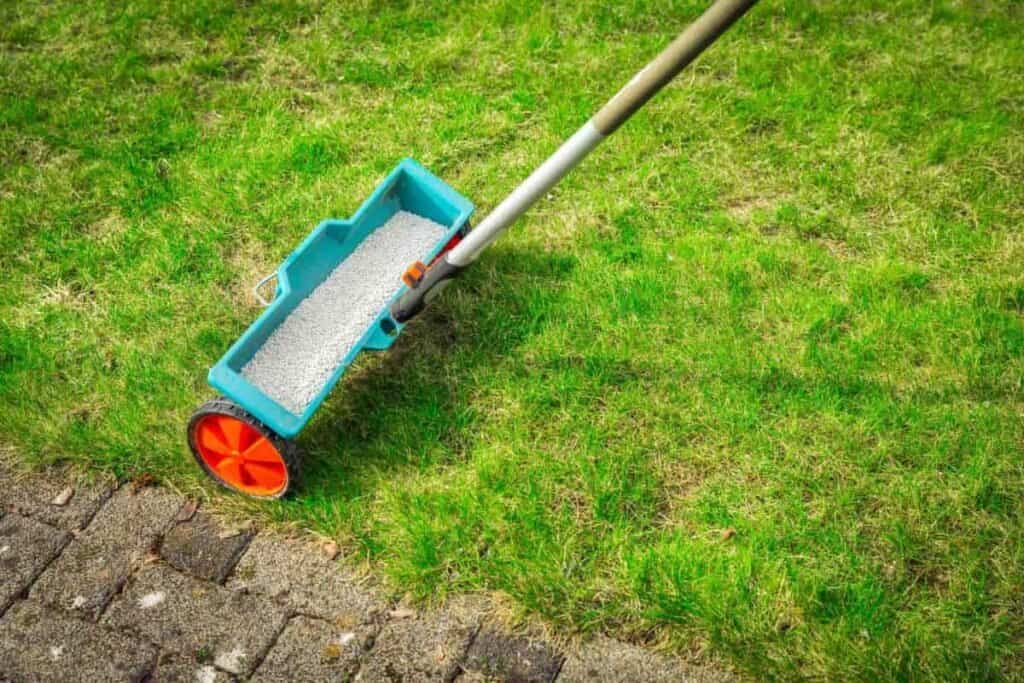If the grass always seems greener on the other side of the fence, your neighbor is probably taking better care of his lawn.
Your lawn, too, will be as green as a golf course if you give it the attention it deserves.

And here’s a happy thought—it’s a case of method, not muscle or money.
Good Lawn Maintenance Tips
Proper Feeding
Probably the most important part of good lawn maintenance is proper feeding with a complete fertilizer containing the right amounts of nitrogen, phosphorus, and potash.
The analysis numbers on the side of the package, like 12-12-12 or 10-6-4, refer to the percentages of these plant foods in the mixture, always in the same order.
A lawn needs all three plant foods, but the most important is nitrogen, which gives grass that healthy, dark green color.
With old-fashioned complete fertilizers, nitrogen is used quickly, often making it necessary to fertilize each month to retain color.
After each application, there is a surge of growth, which slows down as nitrogen is used. The situation is one of feast or famine.
Now, thanks to the new long-lasting fertilizers, this problem is eliminated, saving you the work of extra mowing and feeding.
Nitrogen Fertilizer
Nitrogen in modern, long-lasting fertilizers is usually of the urea-formaldehyde type.
Soil bacteria break it down slowly, releasing color-making nitrogen to the grass over a long period.
Thus your lawn, spoon-fed over the entire season, stays green and grows evenly.
And while spring and fall feeding is generally recommended, urea-form fertilizers may be applied at any time since they will not burn the grass if used at recommended rates.
To ton it all, they are dustless and odorless.
Proper fertilizing gives you a rich green lawn and helps produce a crabgrass-free one.
A well-fed lawn is thick and dense, and if cut no shorter than 1 ½” inches, it produces enough shade to cause the death of crabgrass seedlings that begin to grow in early summer.
To complete your attack, use chemical weedkillers on the established crabgrass.
Many brands do the job in a few treatments and, at the same time, kill other broadleaved pests like dandelion, plantain, and buckhorn.
As the weeds are killed, rake the lawn, fertilize, and reseed the bare spots with an excellent perennial grass seed mixture.
Follow These Lawn Care Tips
Now that your lawn is, at last, rivaling your neighbor’s, keep it that way by following these five tips:
1. Fertilize each spring and fall using one of the new, long-lasting, complete fertilizers. Apply at the rate recommended on the package.
2. Use a sharp mower. A dull one tends to pull up the grass or split the blades, causing them to brown.
3. Mow when the grass is 3″ or 4″ inches tall. Cut no shorter than 1 ½” inches, especially during the summer when crabgrass is trying to take hold.
4. Allow clippings to remain on the lawn. They add valuable organic matter to the soil.
5. Soak your lawn thoroughly to a depth of 6″ inches each week during dry weather. Light sprinkling does more harm than good, causing shallow growth of grassroots while stimulating weeds.